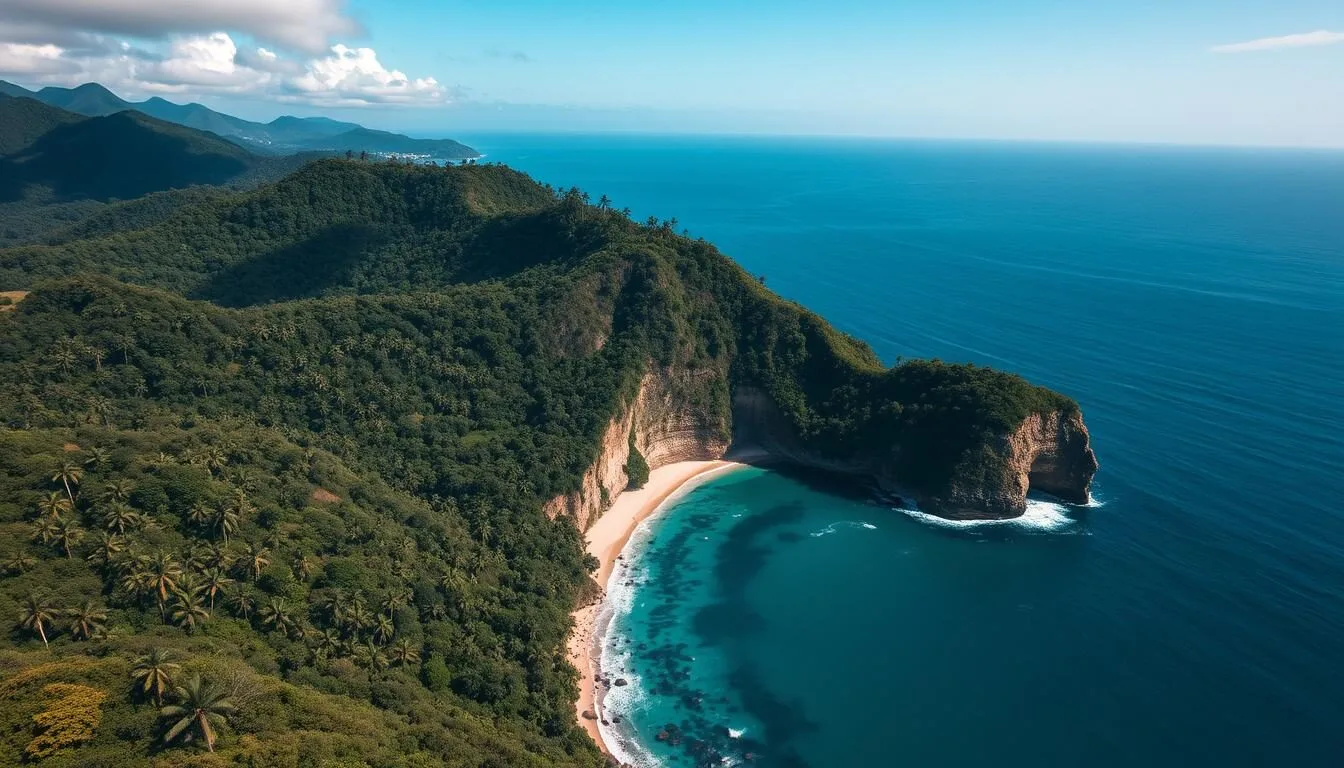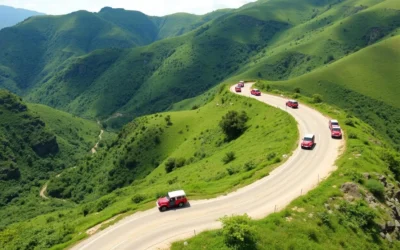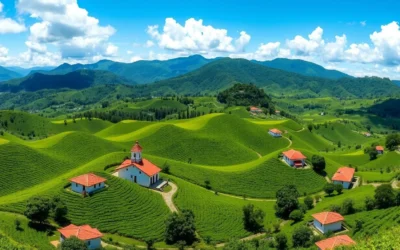Getting There & Planning Your Journey
Reaching Utría National Natural Park requires some planning, as this remote paradise is cut off from the rest of Colombia by dense jungle and mountains. The park is only accessible by boat from surrounding coastal villages.
From Bogotá or Medellín
The most reliable route is flying from Medellín’s Olaya Herrera airport to Bahía Solano using Colombia’s national airline, Satena. From Bahía Solano, you’ll need to arrange boat transportation to the park entrance.
From El Valle
If you’re staying in El Valle, you can reach the park via a 1-hour boat ride. Most lancha (boat) drivers also serve as guides within the park, so you can negotiate a complete package.
From Nuquí
From Nuquí, expect approximately a 1.5-hour boat journey to reach the park entrance.
Ready to start your journey?
Book your flights to Colombia and begin your Utría adventure!
Best Time to Visit & Weather Tips
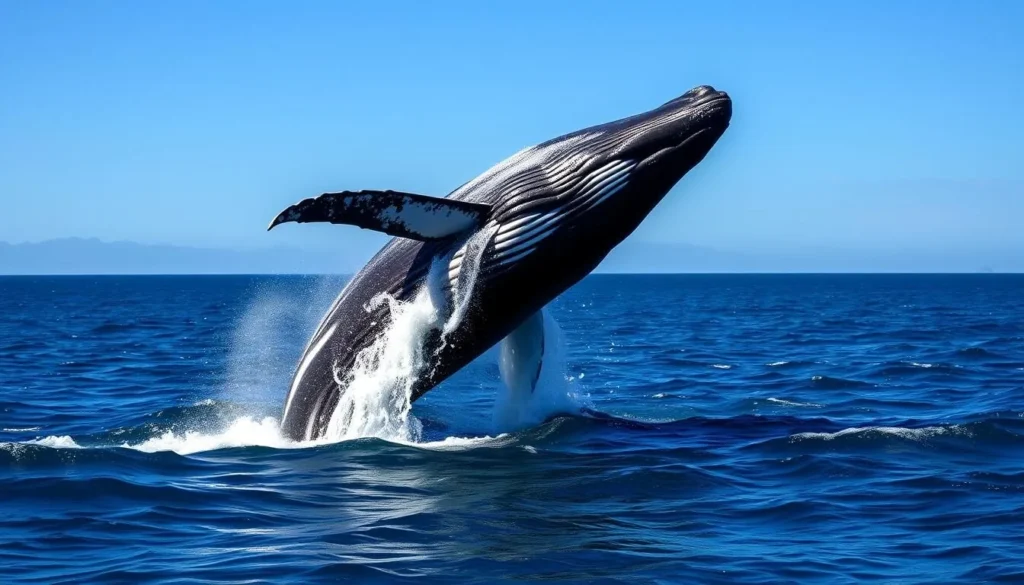
Utría National Natural Park can be visited year-round, but your experience will vary dramatically depending on when you go.
Whale Watching Season (July-November)
The prime time to visit is between July and November when humpback whales migrate to the warm waters of Utría’s cove to mate and give birth. This spectacular natural phenomenon draws visitors from around the world. During this period, you’ll have the best chance of witnessing these majestic creatures up close as they put on breathtaking displays.
Drier Season (December-March)
While the Chocó region is famously rainy (with precipitation on approximately 300 days per year), December through March offers slightly drier conditions. Even during this “dry season,” be prepared for frequent showers.
Weather Considerations
The climate in Utría is characterized by high humidity and abundant rainfall year-round. Temperatures remain stable between 27°C and 30°C (80-86°F) throughout the year. October is typically the rainiest month, so plan accordingly if visiting then.
Pro Tip: Pack lightweight, quick-drying clothing and waterproof gear regardless of when you visit. The combination of heat and humidity means you’ll want breathable fabrics that won’t stay damp for long.
Getting Around Locally

Once you’ve reached the coastal villages near Utría, transportation options are limited but straightforward:
Boat Transportation
The only way to access the park is by lancha (small motorboat). These can be arranged through your accommodation or by negotiating directly with local boat operators in El Valle or Nuquí. A typical boat ride costs between COP 300,000-400,000 (approximately $75-100 USD) for a round trip, often including guide services within the park.
Walking Within the Park
Once inside the park, exploration is primarily on foot via well-maintained trails. The main mangrove trail consists of wooden pontoons and dirt paths, making it accessible for most fitness levels. For more adventurous hiking options, local guides can lead you on longer treks through the jungle.
Kayaking
Kayaks are sometimes available for visitors staying at accommodations near the park, offering a unique way to explore the mangroves and estuaries at your own pace.
Need transportation during your stay?
While you won’t need a car at Utría itself, you might want one for other parts of your Colombia journey.
Where to Stay
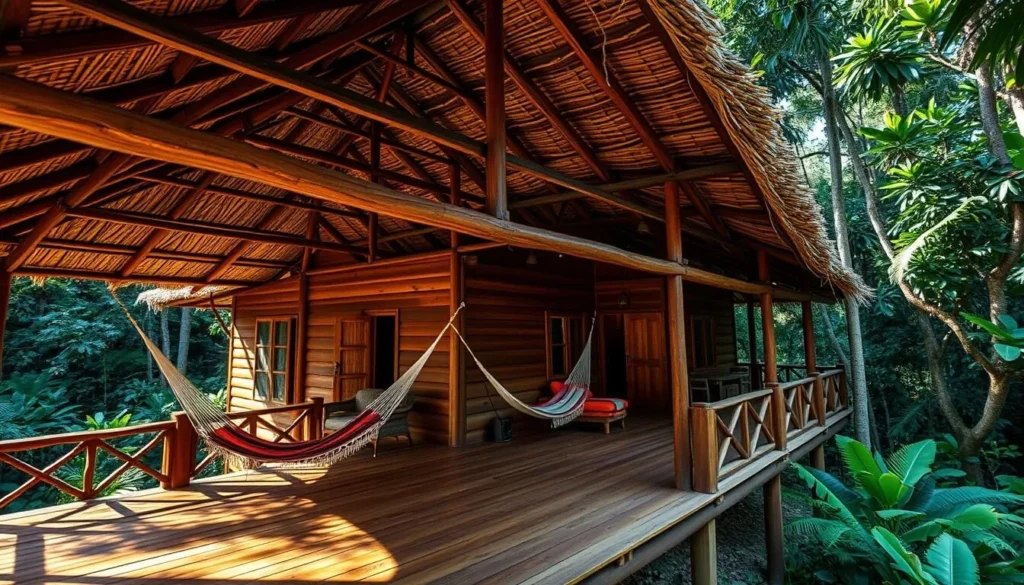
While the park’s cabins are currently closed for renovation, several excellent accommodation options exist in nearby villages:
El Valle
This charming village just north of the park offers a range of eco-lodges and small hotels. Playa Almejal, with its beautiful beach, is particularly recommended. From here, it’s approximately a 1-hour boat ride to the park entrance.
Nuquí
Another excellent base for exploring Utría, Nuquí provides various accommodation options from basic hostels to more comfortable eco-lodges. The boat journey from here to the park takes around 1.5 hours.
Recommended Properties
- El Almejal Lodge – Eco-friendly accommodation in El Valle with excellent whale-watching opportunities
- Coco Loco Lodge – Located in Bahía Solano, about 23km from the park
- Hotel Costa Choco – Comfortable option in Bahía Solano, approximately 30km from Utría
Find your perfect stay
Book accommodation near Utría National Natural Park for an unforgettable experience.
Dining & Local Cuisine
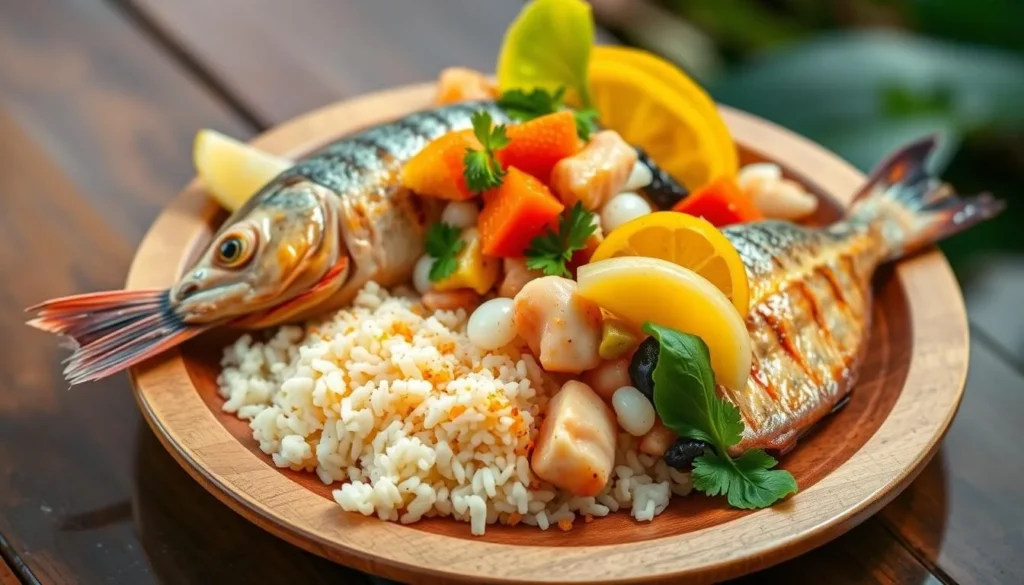
The Chocó region offers distinctive Pacific coast cuisine with strong Afro-Colombian influences. Seafood naturally dominates local menus, with fresh catches prepared in traditional ways:
What to Try
- Encocado de Pescado – Fish cooked in coconut sauce, a regional specialty
- Arroz con Coco – Coconut rice, a staple accompaniment to seafood dishes
- Patacones – Fried plantain patties, often served as a side dish
- Piangua – Local shellfish harvested from mangroves
Dining Options
Within the park itself, dining options are extremely limited. Isla Playa Blanca has a small food shack, but it’s advisable to bring your own water and snacks for day trips. Most visitors rely on meals provided by their accommodations in El Valle or Nuquí, where fresh seafood and local ingredients feature prominently.
Local Tip: If you’re staying multiple days, ask your accommodation about packing a lunch for your park visit. Many lodges are happy to prepare something for you to take along.
Attractions, Sightseeing & Activities
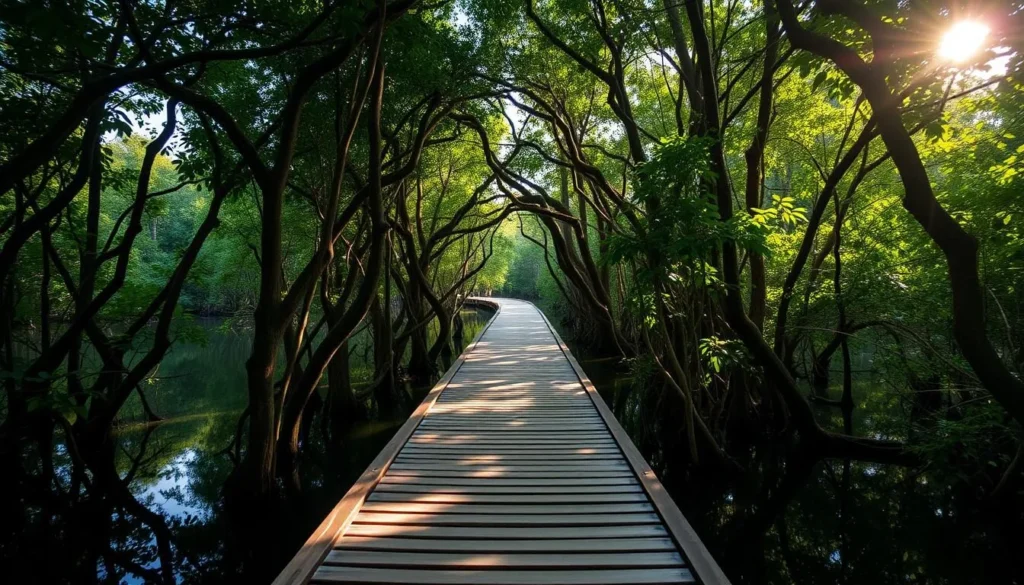
Mangrove Tour
The signature experience in Utría is exploring the mangrove ecosystem via wooden pontoons. This 900-meter walkway takes you through one of the most threatened ecosystems on Earth, where you can spot stingrays, pufferfish, and various bird species. The trail eventually transitions to a forest path along the ocean.
Isla Playa Blanca
This small island within the park boasts rare white-sand beaches (most in the region are black volcanic sand). The crystal-clear waters make it perfect for swimming and snorkeling, with reefs hosting colorful fish. It’s also an excellent vantage point for whale watching during the season.
Hiking Trails
- Cocalito Trail – A 2-hour adventure through pristine jungle, ending at El Cocalito beach
- El Valle – Utría Trail – A 9.46 km, 3-hour moderate hike connecting El Valle to the park
- Underwater Trail – A unique 1.1 km trail that can be explored by canoe and snorkeling at high tide
Experience Utría’s natural wonders
Book guided tours and activities to make the most of your visit.

Water Activities
The park offers excellent opportunities for snorkeling and diving, particularly around Punta Esperanza and Punta Diego, where coral formations host diverse marine life. Kayaking through the mangroves and estuaries provides a peaceful way to observe the ecosystem up close.
Learn More
Cultural Experiences & Local Communities
Utría National Natural Park is not only a natural treasure but also a cultural crossroads where two distinct communities have lived for generations:
Emberá Indigenous People
The Emberá have inhabited this region for centuries, maintaining their traditional way of life deep in the jungles surrounding Utría. They are known for their sustainable hunting, fishing, and farming practices, as well as their intricate handicrafts made from natural materials. Three Emberá reserves are located in the region, primarily along the rivers that wind through the mountains.
Afro-Colombian Communities
The coastal areas near Utría are home to Afro-Colombian communities whose ancestors arrived centuries ago. These communities have developed a rich cultural heritage centered around maritime activities and fishing. Their traditions, music, and cuisine reflect both their African roots and their deep connection to the Pacific coast.
Cultural Preservation
Both communities serve as strategic allies in the conservation of the protected area. Their traditional knowledge and sustainable practices have helped preserve this unique environment for generations. Visitors may have opportunities to learn about these cultures through guided experiences, though such interactions should always be approached with respect and cultural sensitivity.
Respectful Tourism: When visiting indigenous or Afro-Colombian communities, remember you are a guest in their home. Follow your guide’s instructions, ask before taking photographs, and consider purchasing handicrafts to support local artisans.
Wildlife & Nature Experiences
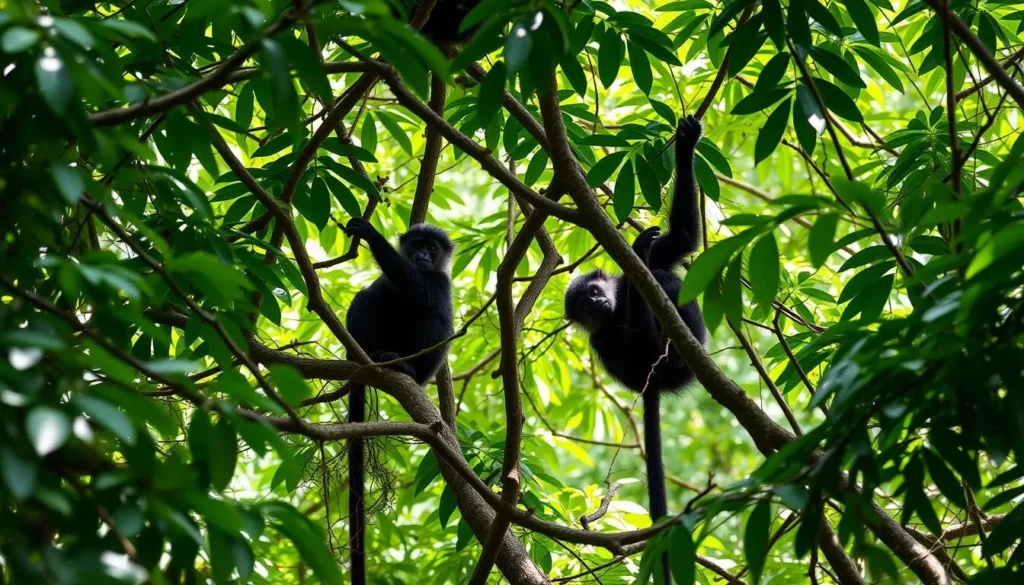
Whale Watching
From July to November, Utría becomes a sanctuary for humpback whales (Megaptera novaeangliae) that travel over 8,000 kilometers from Antarctica to breed in these protected waters. The calm waters of the ensenada provide perfect conditions for these magnificent creatures to give birth and care for their young. Watching these giants breach and play is truly a once-in-a-lifetime experience.
Terrestrial Wildlife
The park’s rainforest is home to an impressive array of mammals including jaguars, howler monkeys, spider monkeys, sloths, anteaters, and numerous rodent species. While larger mammals can be elusive, patient observers may be rewarded with sightings, especially during early morning or late afternoon walks.
Bird Watching
With approximately 380 recorded bird species, Utría is a paradise for bird enthusiasts. The diverse habitats from mangroves to mountain forests support everything from tiny hummingbirds to impressive raptors like the harpy eagle. Bring binoculars and prepare to be amazed by the colorful diversity.
Marine Life
The waters around Utría host 11 of the 16 coral species found in the Colombian Pacific, creating habitat for over 180 fish species. Snorkelers might spot stingrays, pufferfish, and colorful reef dwellers. The park is also a nesting site for several endangered sea turtle species, including the olive ridley and leatherback turtles.
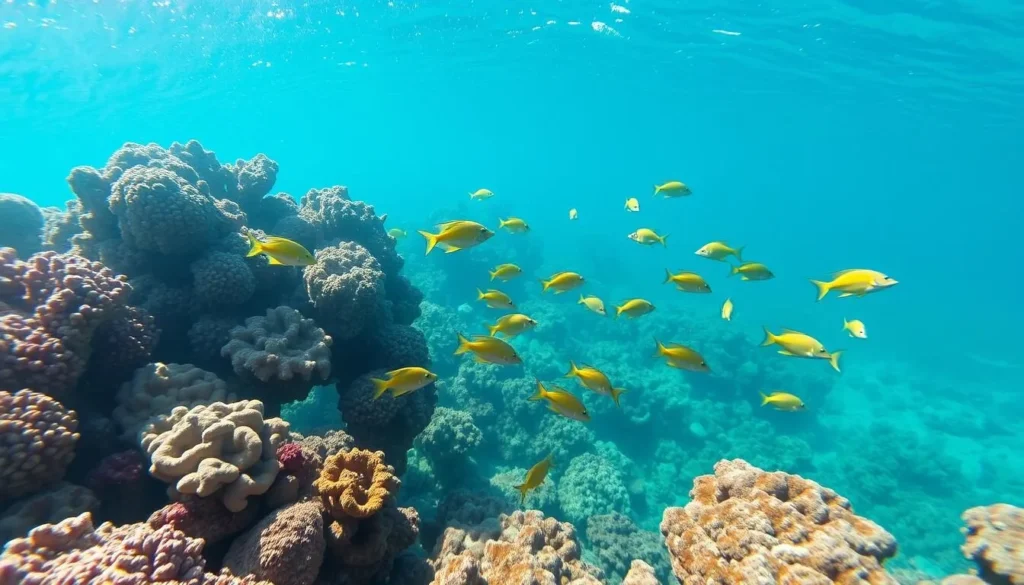
Safety, Etiquette & Local Customs
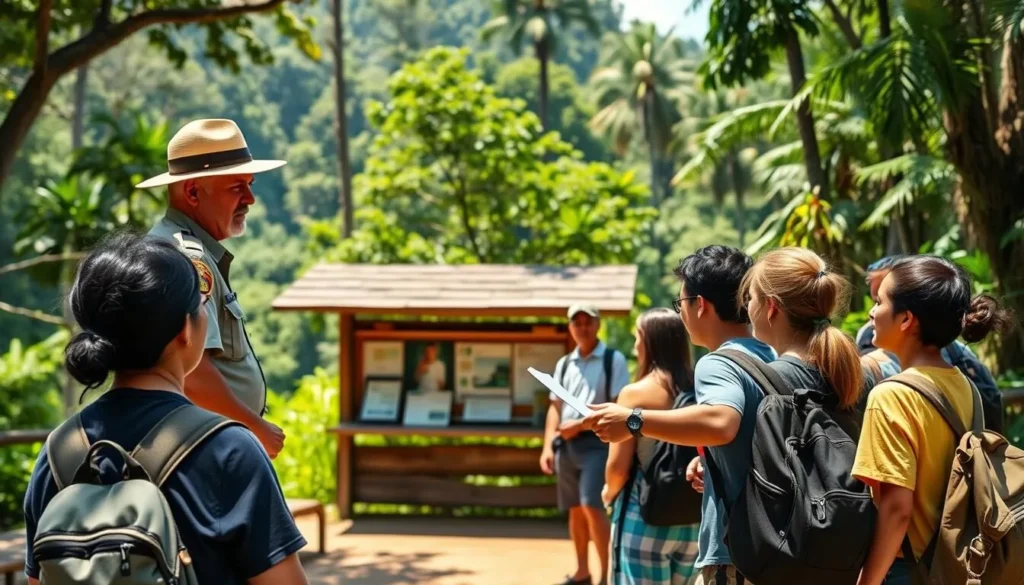
Park Safety
While Utría National Natural Park is generally safe for visitors, its remote location means you should take certain precautions:
- Always hire a certified guide for activities within the park
- Inform your accommodation of your plans before departing
- Carry sufficient water and sun protection
- Use biodegradable insect repellent to protect against mosquitoes
- Wear appropriate footwear for hiking on potentially slippery trails
Environmental Etiquette
Help preserve this pristine environment by following these guidelines:
- Take all trash with you when leaving the park
- Use only biodegradable sunscreen to protect coral reefs
- Stay on marked trails to avoid damaging sensitive ecosystems
- Do not feed, touch, or disturb wildlife
- Avoid using flash photography around animals
Cultural Respect
When interacting with local communities:
- Ask permission before taking photographs of people
- Respect local customs and traditions
- Consider purchasing local handicrafts to support community economies
- Learn a few basic Spanish phrases to facilitate communication
Health Tip: It’s recommended to be vaccinated against yellow fever and tetanus before visiting. Carry any necessary medications with you, as pharmacies are not available in the park or nearby villages.
Practical Travel Tips
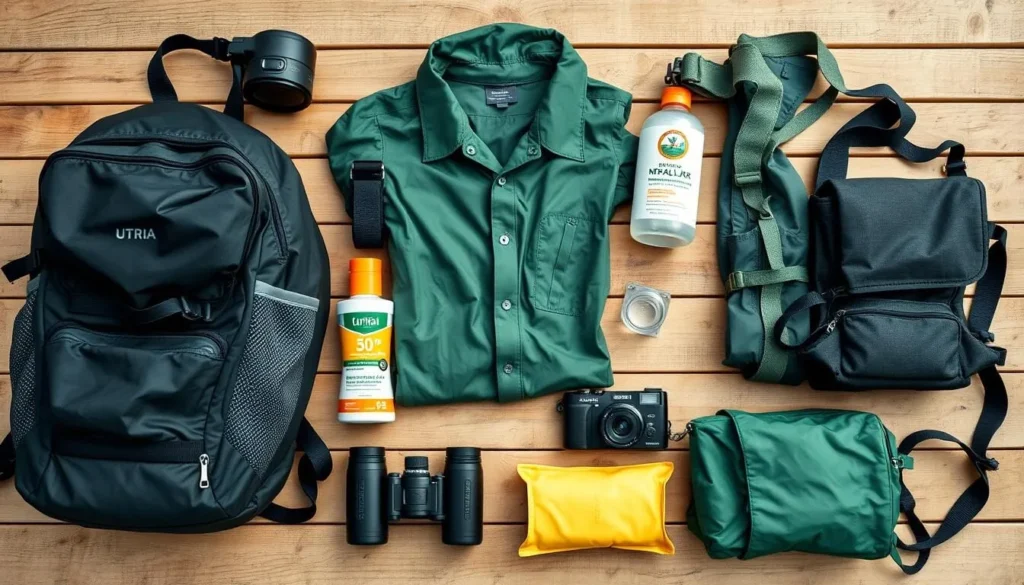
What to Pack
- Lightweight, quick-drying clothing (long sleeves and pants recommended)
- Waterproof poncho or rain jacket (essential in this rainy region)
- Waterproof bags for electronics and valuables
- Biodegradable sunscreen and insect repellent
- Hat and sunglasses for sun protection
- Comfortable walking shoes with good grip
- Binoculars for wildlife viewing
- Snorkeling equipment if you prefer your own
- Sufficient cash (no ATMs in the park or nearby villages)
Park Information
- Opening Hours: 7:00 AM to 4:00 PM daily
- Entrance Fee: COP 72,000 per person for foreign visitors (cash only)
- Guided Tours: Required for most activities within the park
- Duration: Most visitors spend one full day in the park
Communication
Cell phone coverage is extremely limited in and around the park. Inform friends or family of your travel plans before heading to this remote area. Some accommodations in El Valle and Nuquí offer Wi-Fi, though connections can be unreliable.
Planning Tip: Book your transportation to the park in advance, especially during whale watching season (July-November) when visitor numbers increase significantly.
Experience the Magic of Utría
Utría National Natural Park represents Colombia at its most wild and wonderful—a place where pristine ecosystems thrive and nature’s rhythms continue largely undisturbed by human influence. From the mysterious mangroves to the majestic humpback whales, from the vibrant coral reefs to the dense rainforest, this protected area offers experiences that will stay with you long after you leave.
While reaching this remote paradise requires effort, those who make the journey are rewarded with unparalleled natural beauty and the rare opportunity to disconnect from the modern world. Whether you come for the whale watching, the hiking, or simply to immerse yourself in one of Earth’s most biodiverse regions, Utría promises memories that will last a lifetime.
Ready for your Utría adventure?
Start planning your journey to this Colombian paradise today!
The above is subject to change.
Check back often to TRAVEL.COM for the latest travel tips and deals.
